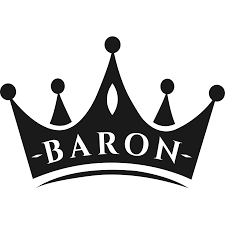A Simple LinkedIn Content Strategy To Grow Your Brand

Do you invest in content?
If you’re running a business, a coach, selling courses, or consulting, you would have heard about content marketing. In short, content marketing is the process of creating and sharing information to educate current and prospective customers. This content could be in the form of videos, blogs, ebooks, memes, case studies, and webinars. Content helps close the gap between someone interested in your brand and the sale.
Content marketing is not limited to businesses. You could use content marketing on an individual basis to help build your brand or position you as a subject matter expert. This can help you land a dream job, get a raise, or work on a project you enjoy.
With the internet and social media, content marketing is non-negotiable. More than 92% of Businesses and Marketers see content as a vital asset. Content marketing also attracts prospective customers organically through techniques like SEO. Strong content can build brand awareness and loyalty, making your company significantly more money in the long run.
There are several ways that you can create and distribute content, with social media the most popular (and cheapest). About 94% of businesses use Social Media to distribute content. But since we’re all about LinkedIn, this blog will cover creating a strategy you can execute on this dream platform. But before you go about recording video or plugging away at the computer, you need a content strategy, specifically a LinkedIn content strategy.
What is a Content Strategy? And why do you need one?
As the saying goes, if you fail to plan, you plan to fail. A content strategy is your plan to leverage content as a means of reaching a specific business goal.
A business that uses content marketing must know what they will be creating, when, and more importantly, WHY they will be creating it.
Without a strategy, you can create loads of content that will fail to bring you tangible business results.
Why choose LinkedIn for your content?
I’m a huge advocate of LinkedIn. It’s transformed my business just through connecting with my ideal customers. Even without a content marketing strategy, being active on the platform can bring results.
However, there is some data to back up the fact that a LinkedIn content strategy will work for your business. For starters, LinkedIn has over 690 million active users. That means your ideal customers are on the platform. And if you live in the US, more than 50% of the users are from America, making it an ideal platform for content marketing. LinkedIn users also have high disposable incomes, with many making $75,000 and over.
Best of all, despite the huge audience, only 3 million users (the equivalent of 1%) create content on LinkedIn. That means there is a massive opportunity for you or your business to create content that dominates, brings in leads, and transforms your company. With your content strategy in place, you can start seeing tangible results sooner than you think.
How do you create a good content strategy?
Content strategy starts with knowing your business, your business goals, and how content marketing fits these goals. It must fit into your brand and should not feel forced.
A good content marketing strategy also forms part of your company’s overall sales funnel.
People should move smoothly from brand awareness to interest, engagement, and finally, the sale.
With a LinkedIn content strategy, you will maximize all the tools on LinkedIn to attract interest from potential customers and key decision-makers. If you manage content for a company, make sure to get decision-makers involved in your content strategy. Here are some steps you can take to put things together from start to finish.
Part 1: Connect Your Content Goals With Your Business Goals.
A LinkedIn content strategy starts with specific goals you want your content to achieve. These goals run the gamut from leads, views, sales, connections, or a combination of these. The content must align with the company's goals, coach, or consultant in terms of revenue, reach, and brand impact. Set 3-5 clear Key Performance Indicators (KPIs), you can track weekly, monthly, and quarterly.
Part 2: Ask the right questions.
During your planning and connecting your content goals with business goals, you need to start asking more critical questions. Critical questions include:
- Who is the content for?
- What types of content will we create?
- Who will create and manage the content?
- How often will we create and publish content?
- What tools will we use to create and measure content?
- When will we know if we’re successful?
Write down the answers to these questions to get an idea of the initial flow of content. Try not to dwell on the semantics here. Content marketing is fluid, and you can change based on the feedback, which we will get to later. With your goals and steps, you can then start with the execution.
Part 3: Create your ideal LinkedIn persona
As part of your initial strategy, you should start talking about the ideal person on Linkedin you’re trying to reach. In content marketing, this is your ideal customer avatar or persona. You can combine both past data and preferences to come up with a list of criteria. This includes age, sex, income, location, frequent publications, and job role or business. You can research what kind and type of content resonate with your ideal persona with this in mind.
Part 4: Brainstorm your content ideas
Spend some time doing a brain dump of content ideas. These include ideas for ebooks, case studies, videos, micro-courses, pdfs, and posts. LinkedIn has the advantage of being not only a social media network but a content management system. You can create blogs, videos, share slideshows, PDFs, and more. Write down as many ideas as possible and categorize them by content.
Part 5: Map out your content
In your previous strategy session, you would have outlined what you want to post and when. Now you have your content ideas, you can create a content calendar. Content calendars help you track your progress and keeps you and your team accountable. You’ll need to know what you’re posting on LinkedIn and when. More importantly, you should have the next steps in place when someone engages with your content or enquires about services.
Part 6: Create and publish your content
Now it’s time to start creating your content. About 54% of marketers outsource their content, so consider your budget and resources when mapping. Creating content can be a time-consuming task. It helps to create content in batches and schedule it over a period of time. You can even create a pillar piece and cut it into smaller pieces of content. Use content management tools like Sendible, Hootsuite, and Sprout Social to save time. Publish your LinkedIn posts, articles, and videos consistently to build trust and brand awareness.
Part 7: Take a look at your initial results.
Use a combination of your Linkedin stats and content management tools to see what works and what doesn’t. You can easily see what types of content you need to focus on. Compare your content to your KPIs. Have you been hitting your targets? Content strategy should be flexible, so don’t be afraid to pivot. Once you start seeing results, reinvest in higher quality content.
A content strategy could skyrocket your business.
Most internet marketers and entrepreneurs advocate for creating content. But you can’t create content without a plan. You want to create content that can resonate with your ideal customer. A solid plan linked to goals will increase your reach, leads, and revenue.
Content Marketing on LinkedIn could be a difficult endeavor. If you need help with positioning yourself on LinkedIn, let’s connect here, or you can try one of my courses or coaching to help you today.





